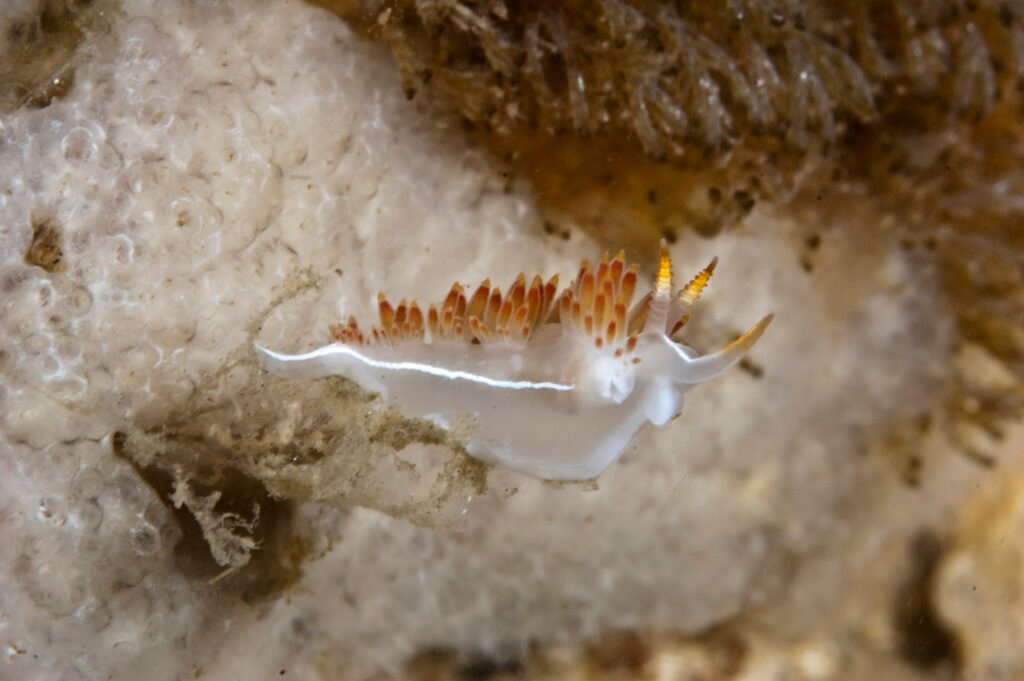Physical Description
The Spanish Shawl, scientifically known as Flabellina iodinea, boasts a translucent purple ground color. Cerata are arranged on 5-8 or more pairs of low, crescent-like elevations along the dorsum edge. They are purple near the base, gradually transitioning to brilliant orange distally, with cores of burnt sienna. Oral tentacles are long, extending up to one third of the body length, and colored similarly to the body but paler distally. Rhinophores feature 40-80 lamellae, with the shaft colored as the body and the clavus ranging from maroon to orange-red, adorned with an opaque white, antero-median ridge. The anterior foot corners are tentaculiform. Typically, individuals measure about 30mm in length, but they may exceed 60mm.
Habitat and Geographical Range
Flabellina iodinea is commonly found along the eastern Pacific coast, inhabiting suitable marine environments.
What They Eat and How They Breed
These creatures likely feed on various marine organisms, though specific dietary habits are not extensively documented. For breeding, Spanish Shawls likely follow typical nudibranch reproductive patterns, laying eggs in gelatinous masses.












